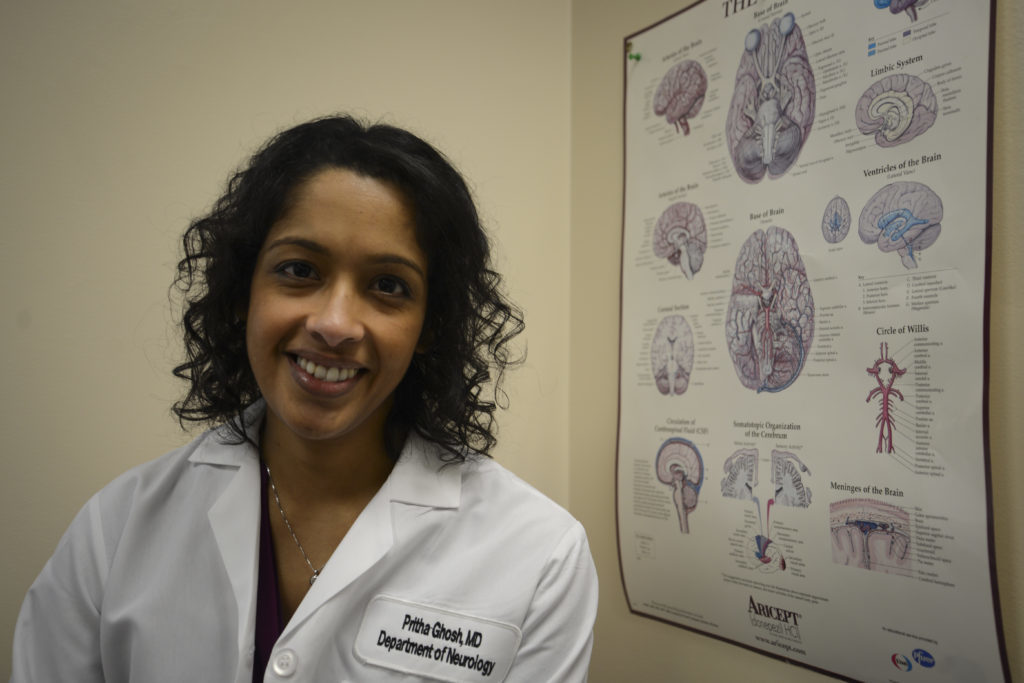When in Rome, GW builds research partnerships.
The University’s research office announced a partnership with the University of Rome Tor Vergata last year, and researchers from both universities are now studying Parkinson’s disease pain – a topic they said is often overlooked. The researchers began enrolling patients in a trial in the U.S. and Rome about two weeks ago.
Pritha Ghosh, an assistant professor of neurology, said in an email that she will be working with a researcher in Rome on the observational study. She said the two of them are planning to enroll 100 patients with Parkinson’s disease on each of the sites.
In the studies, they will ask patients to do a clinical evaluation with a neurologist and fill out questionnaires about their pain and other Parkinson’s disease symptoms, Ghosh said.
“Pain in PD can be complex and is poorly understood,” she said. “With this project, we aim to get a better understanding of the characteristics of PD-associated pain, its prevalence in our populations and its phenomenological determinants.”
At least 500,000 patients across the U.S. suffer from Parkinson’s disease, which is a chronic, progressive movement disorder that impacts cognition, mood and autonomic dysfunction, according to the National Institutes of Health. In fiscal year 2015, NIH funded approximately $146 million in Parkinson’s research.
Ghosh said pain is one of the disease’s non-motor symptoms that can impact a patient’s quality of life.
She added that the project is being funded by the researchers’ respective departments.
Antonio Pisani, an associate professor of neurology at the University of Rome Tor Vergata who is working on the study from Rome, contacted the neurology department over the summer to ask if there was a neurologist who focused on movement disorders and might be interested in collaborating with him, Ghosh said.
Working on different sides of the world isn’t always easy, but Ghosh said the researchers have arranged phone conferences, gotten in touch via email and plan to share and organize data using research database software.
“Email has been a wonderful way to communicate in order to set up the framework of the study and to define our roles in the study,” Ghosh said.
Pisani said in an email that he connected with GW researchers through Leo Chalupa, the vice president for research.
By studying sample populations, the researchers hope to quantify the number of Parkinson’s patients with pain, Pisani said.
“Pain is a neglected symptom, but profoundly affects quality of life of Parkinson’s patients,” he said. “We will conduct an epidemiological study on the occurrence of pain in patients with Parkinson’s disease.”
After collecting a concrete number of samples, Pisani said the researchers will put together all of the data and perform a statistical analysis of the results.
“We will use internationally approved scales, aimed at evaluating the level of pain,” Pisani said. “Numerical scores are obtained, that are easily shared between the two groups, despite the distance.”
GW’s research office has recently pushed to start more international research projects. In 2015, Chalupa announced a shift to helping professors and researchers earn funding from international resources.
University spokeswoman Emily Grebenstein said research office leaders had no updates about new international partnerships, but that they are continuing to look for future opportunities.
Grebenstein declined to comment on whether the partnership will receive a grant from the research office’s international research program, if there will be more collaborations between the two institutions this year and how the office will encourage more connections between researchers at both institutions.
Chalupa said in an interview last month that although GW researchers already have international projects underway, more researchers could be starting global research.
Chalupa said he started the International Research Program, which provides $5,000 grants for travel to faculty who propose international research collaborations, two years ago. The office has funded about 12 travel grants so far, he said.
“We want our faculty to form international collaborations,” Chalupa said. “We do have already faculty doing quite a bit but we need to accelerate that a lot so people all over the world know that GW is a research place and there is exciting stuff going on here.”





